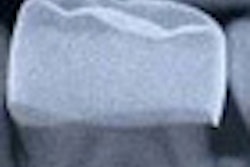Dear Restoratives Insider,
Some impressive new endodontic files have come on the market recently, but chemists have been just as busy as engineers in this field. They've come up with several irrigants that offer the possibility of flushing and disinfecting root canals better than ever before. One key finding: You need more than one irrigant to get the best results. As a Restoratives Insider, you can read this exclusive article here.
That story leads a pack of important news in the world of dental restoratives from recent weeks.
On the regulatory front, both the U.S. Environmental Protection Agency (EPA) and the U.S. Food and Drug Administration (FDA) are once again mulling restrictions on amalgam.
Vigorous petitioning by antiamalgam folks led the FDA to reconsider just how final its "final rule" on the substance should be. On July 28, 2009, the agency laid down guidelines about how amalgam should be used and any warnings that should be required. Now the agency is reopening the contentious issue with a hearing December 14-15. Read more.
While that meeting will focus on the health effects to patients, the EPA is considering the environmental impact of amalgam disposal, including proposals that all dentists should be required to install amalgam separators in their offices. Click here to read more.
Such discussions have lent urgency to the search for alternatives to conventional restorative techniques. One of the most controversial is the Hall technique, in which dentists cement a preformed metal crown over a carious primary molar without preparing the tooth. It's a radical concept, but a study presented this month at the International Association for Dental Research (IADR) annual meeting in Barcelona, Spain, suggests that it works. To see how, click here.
Another new way of restoring without much preparation is to apply a resin infiltration. This approach can stop in their tracks lesions that are not yet big enough to warrant a full restoration, but that are difficult to treat with a sealant -- such as small proximal lesions and orthodontic white spots. Click here to read about an IADR study suggesting more dentists should make use of this technique.
The conference revealed innovations at the other end of the restoratives spectrum as well. Because zirconia looks more like natural tooth than titanium does -- and is even harder -- researchers have been experimenting with one-piece implants made from this material. Some of the first results suggest that their implants approach the low failure rates reported for titanium implants. Read about that research here.
Keep abreast of these and other advances in restoratives materials and techniques by visiting the DrBicuspid.com Restoratives Community regularly.



















